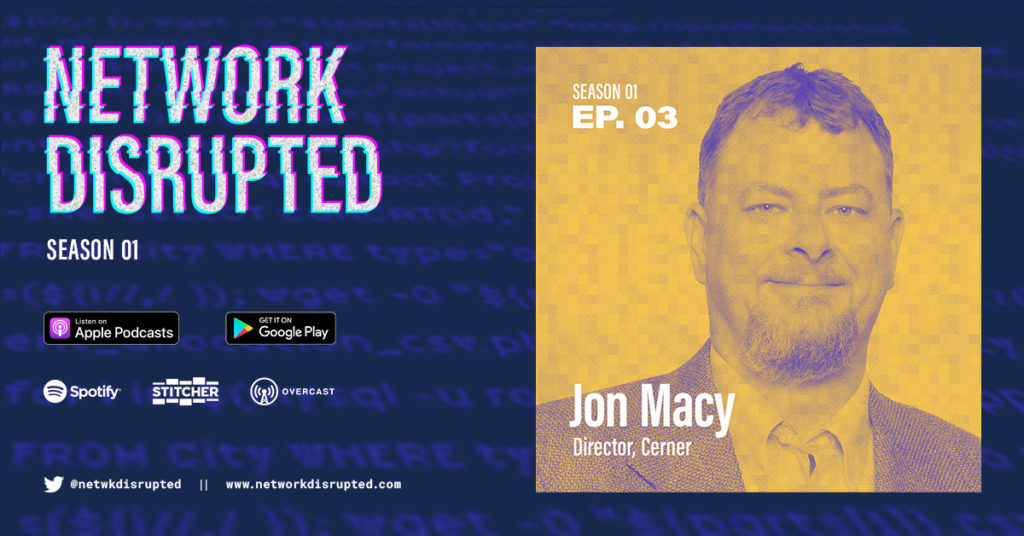Cerner’s key to managing requirements is relationships
Cerner’s Jon Macy shares his keys for managing IT solution requirements: write them down first, allow nascent ideas, be flexible, and lean into conflict.

Interpreting customer requirements is part art, part science. If, as a technology leader, you directly fulfilled every customer request that came in, you’d end up with a mud pie of a product. On the flip side, if you don’t take your customers’ expressed needs seriously, you’ll eventually end up without any customers at all.
The best technology leaders understand that reading between the lines of their stakeholders’ requests is the key to creating momentum for everyone.
Only, that’s often easier said than done. Building such a feedback loop—one that allows you to act on the right stuff in the right way—is a monumental achievement that Jon Macy can speak to.
In his 15 years at Cerner, which supplies healthcare IT services, Macy, who is now a director, has worked on technology architecture for the entire organization. The company itself is multi-faceted, involved in software sales and hosting products developed in-house as well as others’. It makes interpreting requirements in their context especially complex.
Below are his insights that he shared during the first season of the Network Disrupted podcast with host and BlueCat Chief Strategy Officer Andrew Wertkin.
Requirements always come before the solution
Sometimes customers have a specific view of how they think a solution should be built. They express that vision in their requirements at the expense of articulating the business problem they’re actually trying to solve. Blindly fulfilling requests like this is risky. It puts the technology team at the mercy of the requester’s technical imagination and assumptions, with no ability to truly add value to the solution.
Underlying technology is an important detail, but it’s really just a detail for meeting the requirements. I’m a technologist, but I’ve always had a foot in the business. I can build and design and operate the coolest technical stacks and functionality that the world has ever seen, but if my business can’t sell it or make money on it, it’s pretty much a fail.
That’s why Macy says it’s so important to work with the customer and literally write out business requirement expectations early on. This documentation process makes it easier for the customer and technology team to build a shared vision they can stay focused on. Furthermore, much like GM Financial’s cloud VP Thomas Sweet measures success by overall value delivery, it results in a solution that is as valuable as possible.
Cerner has even implemented a review process to this effect, as Macy explains in the clip above. That way, as a project evolves over time (they always do), both the requester and solution team have a chance at staying grounded in what matters most. Which, of course, is the business requirement.
Understand that half-baked ideas are just as sweet
Another way to encourage true partnership between you and a customer is to engage earlier on in the solutioning process. Don’t allow customers to feel like they must have a fully-baked idea before they can approach you.
This is beneficial for everyone. On one hand, the solution team can help with building a vision for a solution based on the possibilities they see from their perspective. It prevents a customer from going too far down the rabbithole of solutioning something too narrow themselves.
On the other, Macy recounts that a number of Cerner’s broad product decisions have been inspired by seemingly narrower, seedling ideas that customers shared with them. As he illustrates in the clip below, a single customer request that came through in a collaborative way turned into an entire line of business for Cerner.
Accept customer requests in flexible ways
Cerner doesn’t solely rely on a formal, rigid process for accepting customer requests. In fact, flexibility is something Macy believes more organizations should make space for.
For the post part, Macy says, requests follow an intake process at Cerner. However, he adds, information can flow so many different ways. Maybe somebody forgot to consult you on a change. If you dig your heels in instead of hopping on a call to figure things out anyway, you’ll end up teaching customers to avoid you rather than involve you the next time.
It’s a given that things aren’t always going to go to plan. But to Macy, it’s more important to find a way to fulfill business needs rather than delay them because you got bogged down in processes and requirements. This also helps to build those all-important relationships with customers. You’re demonstrating that you can be depended on in the future because you were able to pull through.
Lean into conflict; it strengthens your relationships
There can be a lot of misunderstanding between businesses and customers. Macy says that can be improved by choosing the right partners and building good relationships.
However, even with great relationships, Macy says it’s important to know that there will still be misunderstandings and divergent views. But the ability to step back and examine that is more important than trying to sidestep mistakes.
Likewise, he believes that a customer being upset or disappointed along the way isn’t something to be afraid of. Oftentimes, what the partnership is able to come up with in the end results in something that neither expected. Sometimes it can even help advance the larger industry.
Catch the full Network Disrupted podcast episode below.




